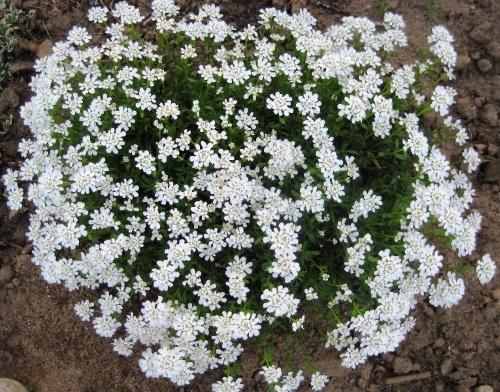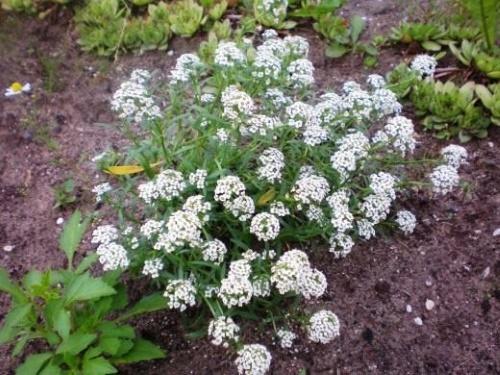We grow unpretentious evergreen Iberis on the site
 Compact, round and lush bushes, completely covered with white umbrellas of small flowers - this is a handsome evergreen Iberis. Its hard small leaves practically hide under the abundant cap of inflorescences and do not crumble from the branches even for the winter. This simple perennial has a chic look and docile character, which is why it is widely used to decorate the site.
Compact, round and lush bushes, completely covered with white umbrellas of small flowers - this is a handsome evergreen Iberis. Its hard small leaves practically hide under the abundant cap of inflorescences and do not crumble from the branches even for the winter. This simple perennial has a chic look and docile character, which is why it is widely used to decorate the site.
Iberis is a member of the cruciferous family, and is also known by the names of peppercorns or variegated.
Growing bushy grass will not be too much trouble, because even a novice florist can cope with planting and caring for Iberis evergreen. If you initially choose the right place for it, in the future the flower does not present any special requirements and develops on its own to the joy of the owner.
Where and how to plant?
Most often Iberis grown by the seed method, since the seeds retain their germination for a long time and germinate together.
There are two ways to sow seeds:
- For seedlings... They start growing seedlings in March. The pot with crops is kept in a bright, warm place, periodically spraying them (no need to pour water into the pot).
- Directly into open ground... You can sow in April or before winter. Spring crops after the emergence of shoots are thinned out, leaving a distance between shoots of about 15 cm. Bushes are planted on a flower bed in May, bypassing the picking stage, so as not to damage the delicate roots in the form of a long rod.
In order for the Iberis to bloom throughout the summer, it is recommended to sow it in spring in two approaches with a 2-week break.
A place for an evergreen perennial should be chosen bright (he loves the sun), and always without stagnant moisture.
How to care for a perennial?
Caring for Iberis is as simple as possible. This is a fairly persistent plant and does not need frequent watering. The only exception is hot dry summers. It also develops well without additional dressing, although for more lush flowering, you can add it once in the summer mineral preparations.
To maintain a beautiful and compact shape, you should cut off wilted inflorescences, and also trim the bushes after flowering, leaving no more than 2/3 of the length of the shoots.